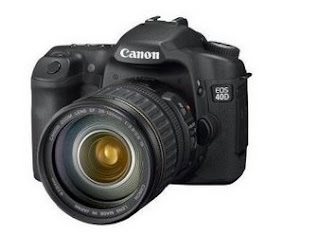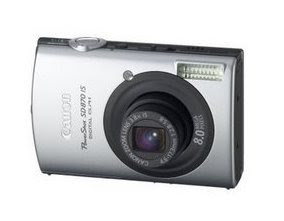2.Bridge cameras-Bridge or SLR-like cameras are higher-end digital cameras that physically resemble DSLRs and share with them some advanced feature,but share with compact the framing of the photo using live preview and small sensor size.Bridge cameras often have super zoom lenses which provide a very wide zoom range,typically between 10:1 and 18:1,which is attained at the cost of some distortions,to a degree which varies from lens quality.These cameras are sometimes marketed as and confused with digital SLR cameras since appearance is similar.Bridge cameras lack the mirror and reflex system of DSLRs,have so far been fitted with fixed (non interchangeable) lenses (although in some cases accessory wide-angle or telephoto converters cannot be attached to the lens ),can usually tale movies with sound , and the scene is composed bu viewing either the liquid crystal display or the electronic viewfinder (EVF).They are usually slower to operate than a true digital SLR , but they are capable of very good image quality while being more compact and lighter than DSLRs.Many of these cameras can store images in lowless RAW format as an option to JPEG compression.The majority have a build-in flash,often a unit which flips up over the lens.
3.Digital single-lens reflex camera (or DSLR)-This kind of digital camera use a automatic mirror system and pentaprism or pentamirror to direct light from the lens through the viewfinder eyepiece.The basic operation of a DSLR is as follows:
 for viewfinder purpose , the mirror reflex the light comming through the attached lens upwards at an approximately 90 degree angle.It is then reflected by the pentaprism to the photographer's eye.During exposure (when the photograph is taken) ,the mirrors swings upwards ,and a shutter opens ,allowing the lens to project light onto the image sensor.
for viewfinder purpose , the mirror reflex the light comming through the attached lens upwards at an approximately 90 degree angle.It is then reflected by the pentaprism to the photographer's eye.During exposure (when the photograph is taken) ,the mirrors swings upwards ,and a shutter opens ,allowing the lens to project light onto the image sensor.The reflex design scheme is the major difference between a DSLR and an ordinary digital camera (digicam) ,which typically exposes the sensor constantly to the light projected by the lens , allowing the camera screen to be used as an electronic viewfinder.
In contrast the mirror arrangement in a DSLR usually precludes the ability to view the scene on the liquid cristal display (LCD) before the photograph is taken.However many newer DSLR models feature live preview ,allowing the LCD to be used as a viewfinder in the same way as a normal digicam ,although with certain limitation and with the optical viewfinder disabled .
In most other respects ,a DSLR is similar in principle and operation to a standart (non-SLR) digital camera.
The ability to exchange lenses ,to select the best lens for the current photographic need ,and to allow the attachment of specialized lenses,is a key to the popularity of DSLR cameras






No comments:
Post a Comment